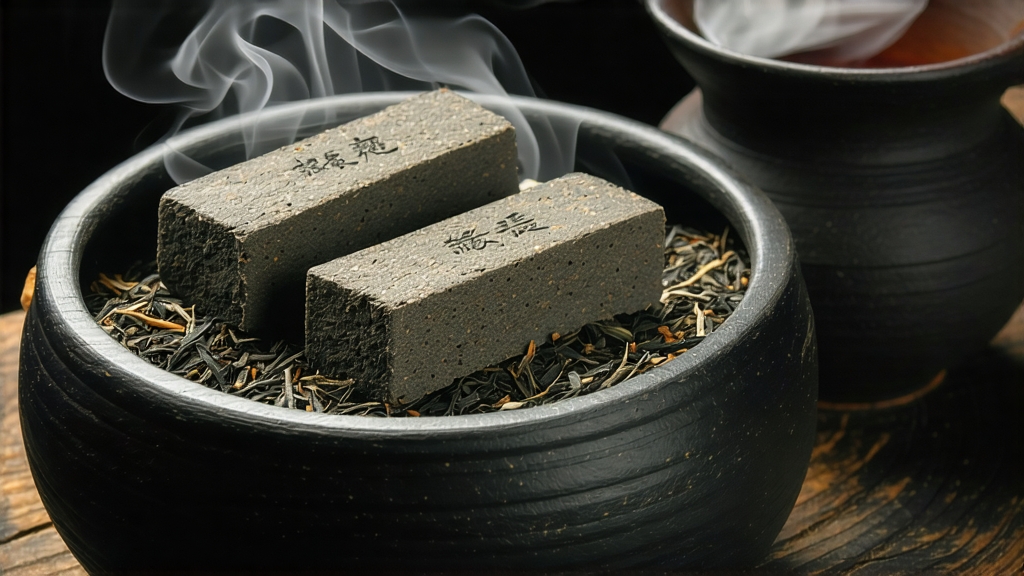
Tucked away in the mist-wrapped mountains of southern Guangxi, Liu Bao tea has spent four centuries quietly perfecting the art of getting better with time. To most outsiders “dark tea” (heicha) begins and ends with Yunnan’s Pu-erh, yet Liu Bao is the older, subtler sibling that Chinese tea traders once loaded onto bamboo rafts and floated down the Xun River to the Pearl Delta, where clipper ships carried it to Southeast Asia and the kitchens of Kuala Lumpur’s tin miners. Today the same tea is re-emerging from clay jars in Hong Kong teahouses and Berlin specialty cafés, prized for its ability to soothe the stomach after dim sum and to taste like a forest after rain. This article invites the global tea lover to discover why Liu Bao is called “the tea that travels well and heals better.”
History: From Border Post to Maritime Silk Road
The name Liu Bao literally means “six fortresses,” a reference to the six strategic stockades that guarded the Guangxi-Guangdong frontier during the Ming dynasty. Caravans of the Yao and Zhuang minorities paid their tolls in compressed tea, and by 1580 the Qing imperial court had granted Liu Bao the status of “tribute tea,” accepting 150 baskets annually. When the British opened Hong Kong in 1842, Cantonese merchants realized that the humid holds of sailing ships actually improved the tea, softening its rough edges and deepening its color. Thus began the “wet storage voyage” tradition: tea was deliberately held in the bilge water of vessels bound for Singapore, arriving blacker, sweeter, and commanding double the price. In 1886 the Foshan-based Li Yuan tea house stamped its Liu Bao bricks with the character “Fu,” blessing the tea and guaranteeing authenticity; those bricks still surface at auction today, fetching more than silver dollars by weight.
Terroir: Where Humidity Writes Flavor
Liu Bao is grown between 200–600 m on the southern flank of the Dayao Mountains, where the annual humidity hovers at 85 % and the red lateritic soil is laced with quartz and iron. The cultivar is a medium-leaf Camellia sinensis var. sinensis locally called “medium leaf Yao,” distinguished by a pink petiole and a pronounced saw-tooth edge. Because the region sits on the Tropic of Cancer, morning fog lingers until noon, forcing the plant to synthesize more theanine and fewer catechins; the result is a naturally sweet, low-astringency leaf that can withstand the heavy fermentation to come.
Harvest Calendar: Picking for Tomorrow’s Memory
Plucking begins in late March when two leaves and a bud reach 5–6 cm, still soft enough to fold without snapping. A second flush in May provides the “rain tea” prized for its orchid nose, while an autumn picking in October yields thicker cell walls ideal for decades of aging. Unlike green tea that celebrates the immediacy of spring, Liu Bao farmers think in five-year increments; they will even leave a few buds on the bush so that next year’s growth carries the memory of the previous one, a practice they call “keeping the mother.”
Craft: The Secret Life of Water and Heat
The journey from fresh leaf to dark brick is a choreography of water, heat, and microbial diplomacy. After a brief outdoor withering, leaves are wok-fired at 280 °C for eight minutes, hot enough to kill the green enzymes but leave a faint grassy note. Rolling follows, 40 minutes of alternating pressure that cracks the cell walls without breaking the vein. The pivotal step is “wet piling” (wo dui), invented here two centuries before Yunnan adopted it for ripe Pu-erh. Leaves are piled 70 cm high inside bamboo rooms, sprayed with mountain spring water until moisture reaches 38 %, then covered with jute sacks. For the next 25 days the pile is turned every five days, allowing a consortia of Aspergillus niger, Blastobotrys adeninivorans, and local Bacillus species to raise the temperature to 55 °C. The tea master listens for a camphor-chestnut aroma and watches for the moment the leaf turns chestnut-brown with a coppery rim—signals that the microbes have rewritten the leaf’s chemistry, converting bitter catechins into mellow theaflavins and thearubigins.
Drying and Compression: Giving Time a